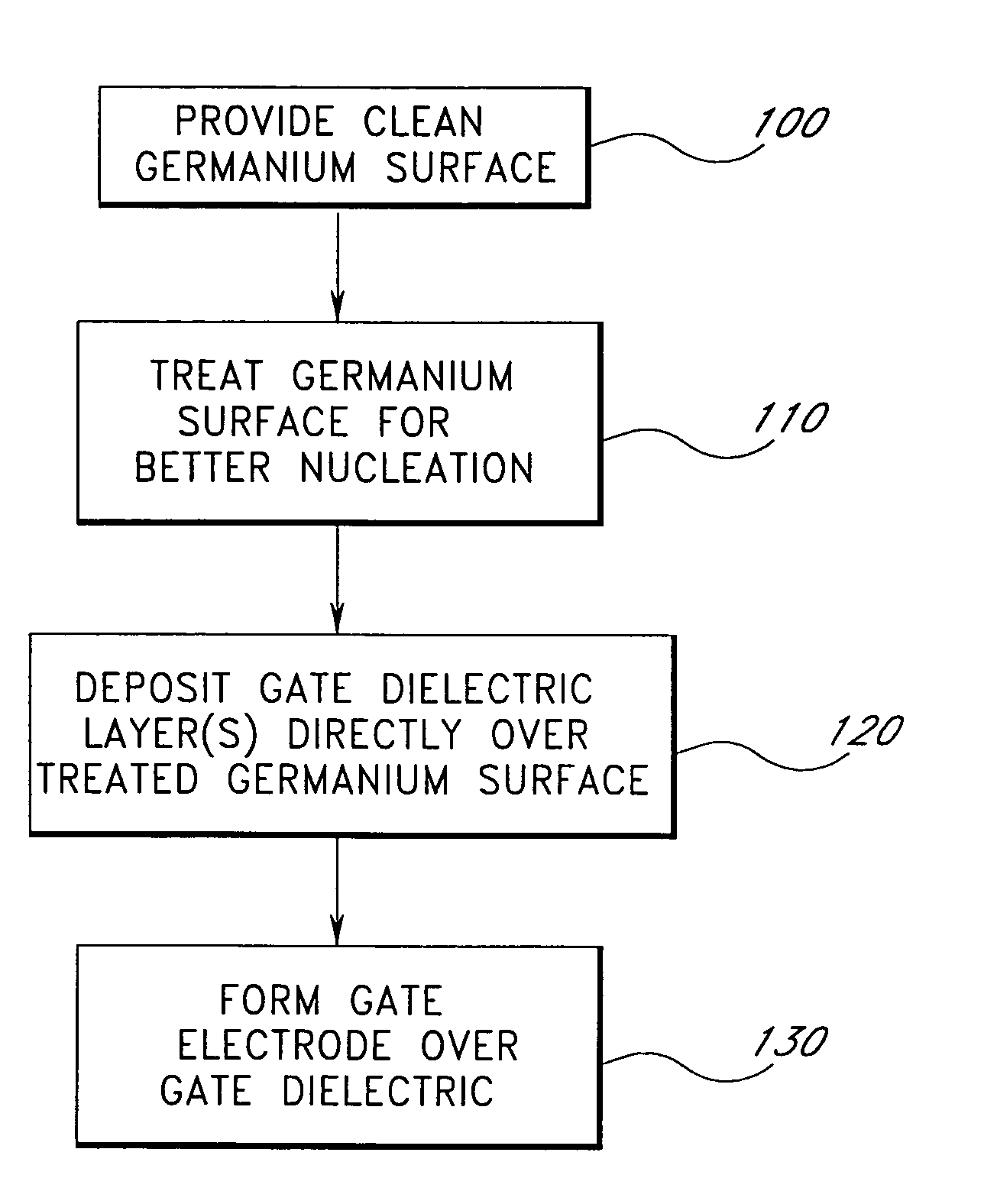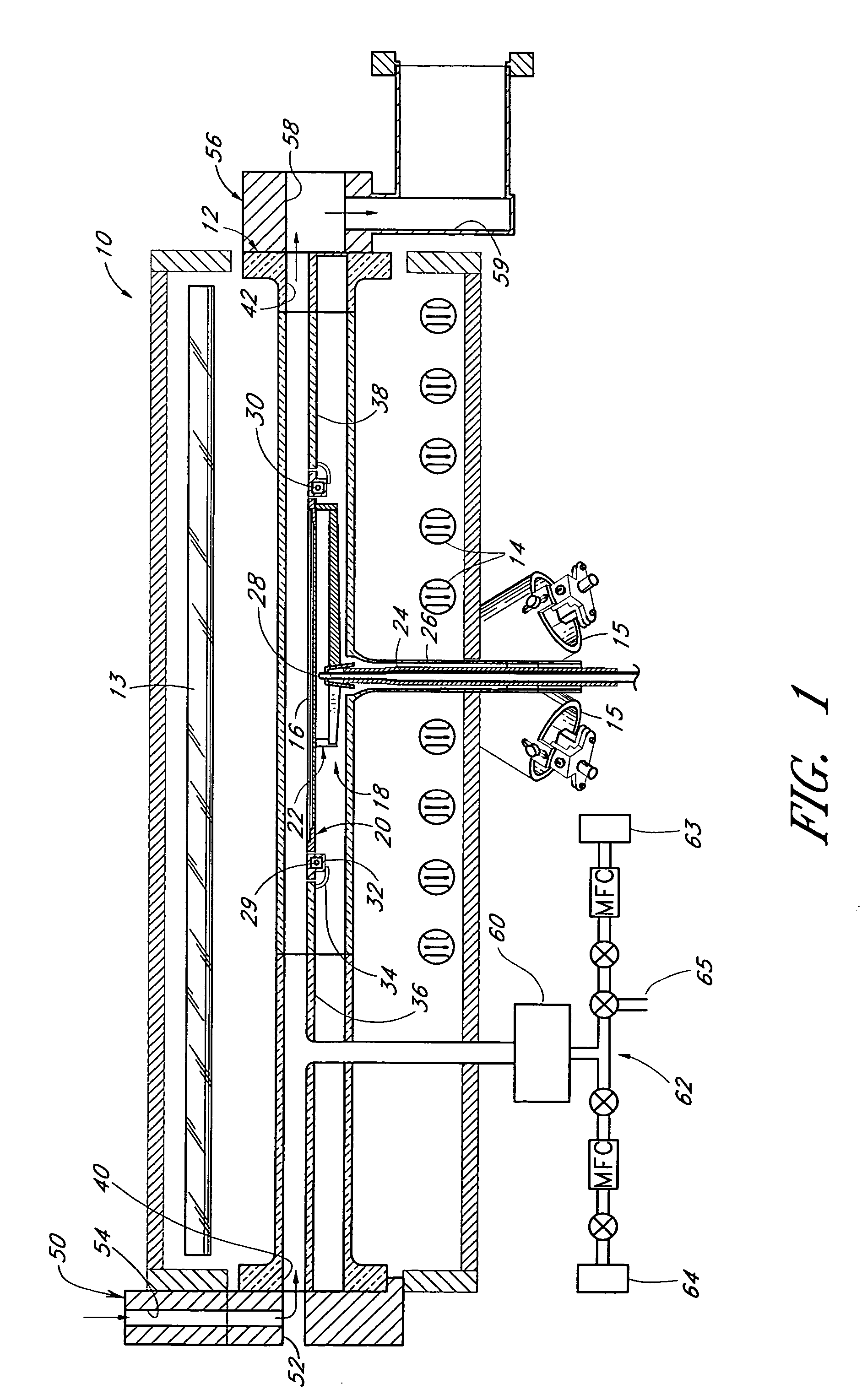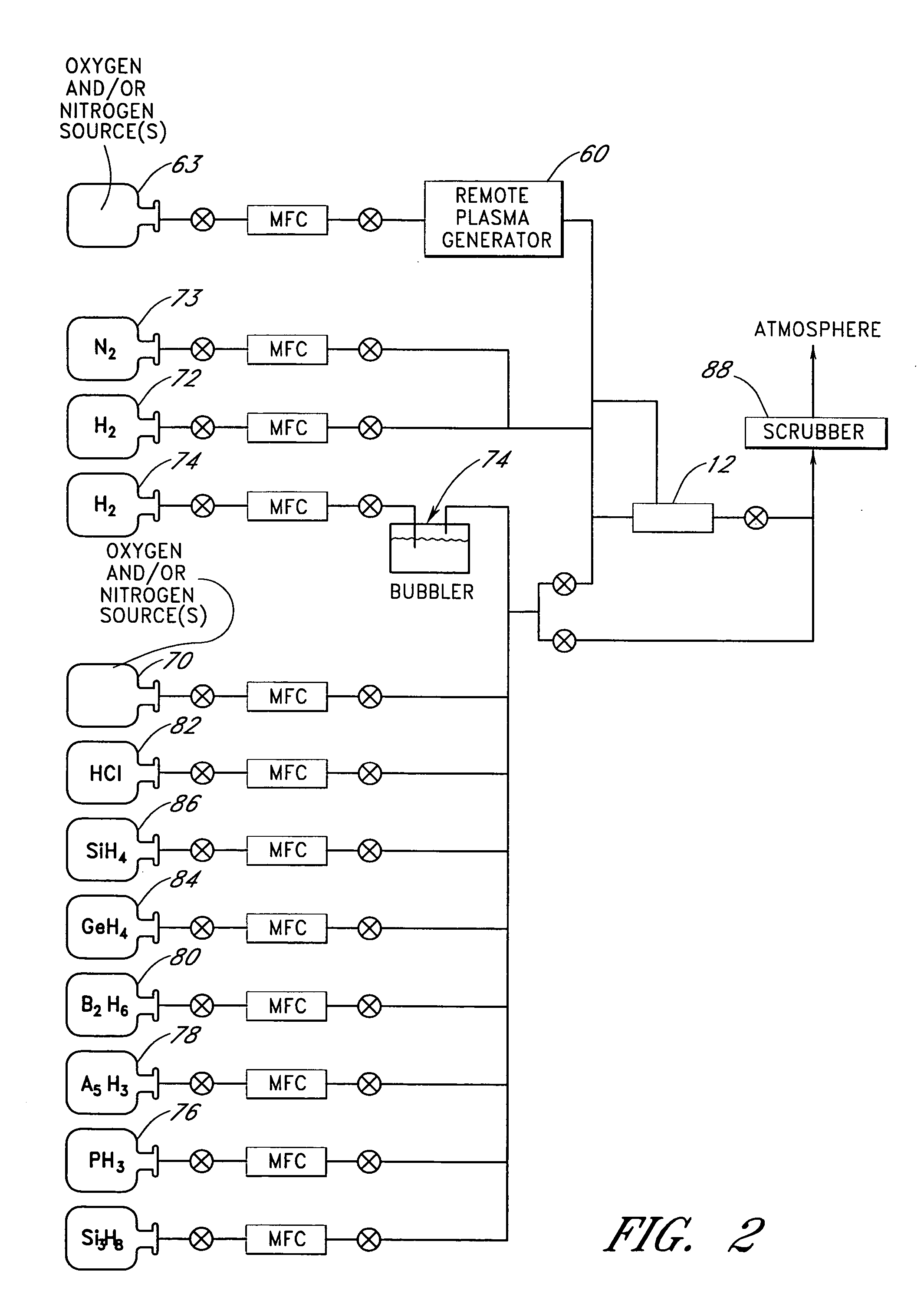Surface preparation prior to deposition on germanium
a germanium surface and film technology, applied in the field of germanium surface preparation, can solve the problems of prone to nucleation effects, limited uniformity of deposition techniques, and inability to achieve uniform deposition, and achieve the effect of advantageously facilitating subsequent deposition
- Summary
- Abstract
- Description
- Claims
- Application Information
AI Technical Summary
Benefits of technology
Problems solved by technology
Method used
Image
Examples
Embodiment Construction
[0022]Treatments are described herein for preparing germanium surfaces for subsequent deposition. The thermal reaction or plasma products preferably modify termination of the germanium surface to make it more uniformly susceptible to subsequent deposition. The treatments preferably provide a consistent density of nucleation sites across the surface. While the treatment processes are described herein in conjunction with adsorption-driven reactions of atomic layer deposition over the treated germanium surface, the skilled artisan will readily appreciate that the methods taught herein will also be applicable to nucleation of other deposition processes for a variety of materials over germanium surfaces.
[0023]Atomic layer deposition (ALD) is a self-limiting process, whereby alternated pulses of reaction precursors saturate a substrate and leave no more than one monolayer of material per pulse. The precursors are selected to ensure self-saturating reactions, because an adsorbed layer in o...
PUM
| Property | Measurement | Unit |
|---|---|---|
| temperature | aaaaa | aaaaa |
| temperature | aaaaa | aaaaa |
| dielectric constant | aaaaa | aaaaa |
Abstract
Description
Claims
Application Information
 Login to View More
Login to View More - R&D
- Intellectual Property
- Life Sciences
- Materials
- Tech Scout
- Unparalleled Data Quality
- Higher Quality Content
- 60% Fewer Hallucinations
Browse by: Latest US Patents, China's latest patents, Technical Efficacy Thesaurus, Application Domain, Technology Topic, Popular Technical Reports.
© 2025 PatSnap. All rights reserved.Legal|Privacy policy|Modern Slavery Act Transparency Statement|Sitemap|About US| Contact US: help@patsnap.com



